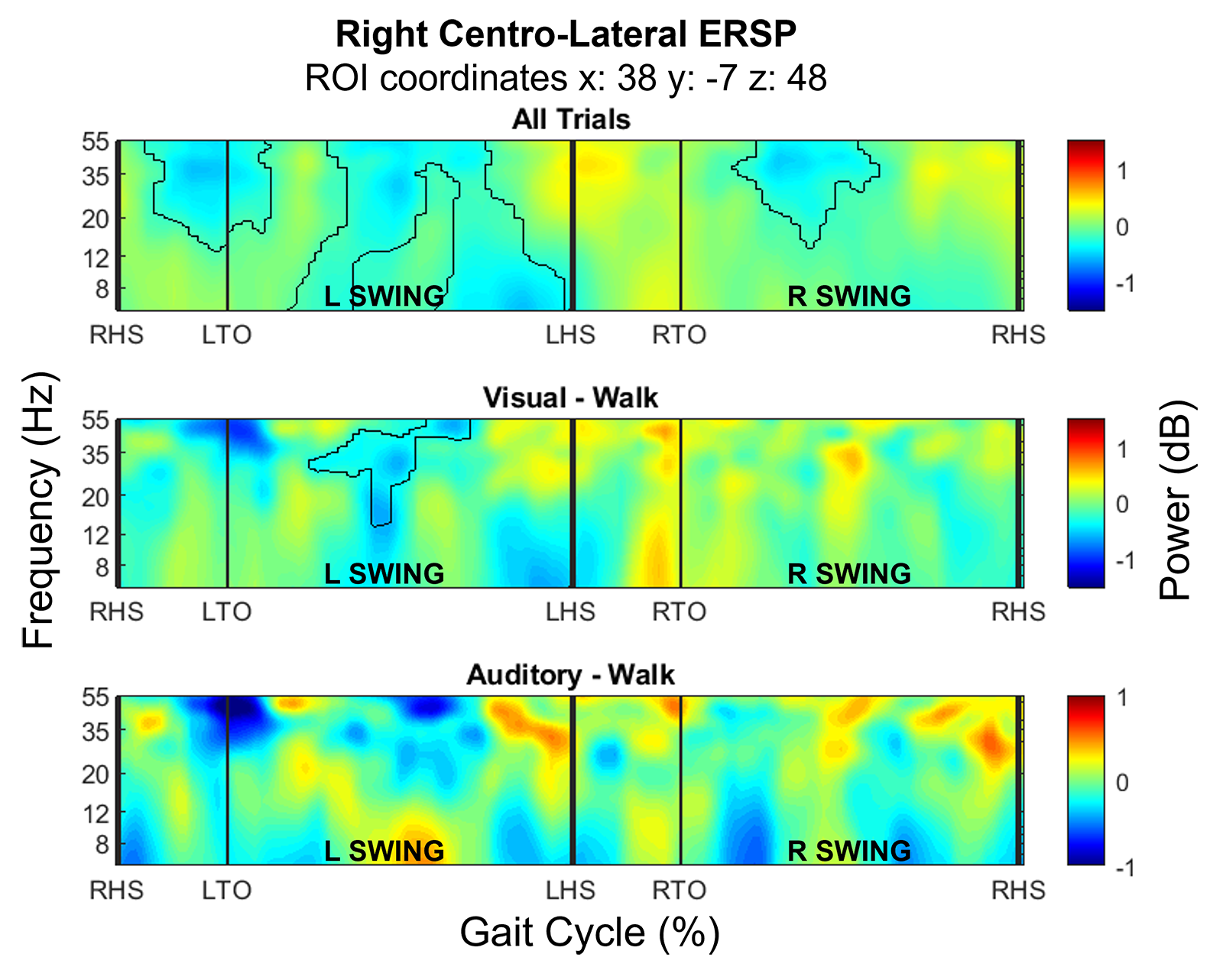Category: Parkinson's Disease: Neurophysiology
Objective: To Investigate the effects of cueing on gait kinematics and neural activity in Parkinson’s disease (PD) using electroencephalography (EEG).
Background: Sensory cueing strategies can ameliorate gait impairments in PD even when dopaminergic treatments fail. However, efficacy of cueing strategies is heterogeneous across patients and difficult to sustain in everyday life. Recent work suggests that gait-related cortical activity may contribute to improvements in cued vs uncued gait [1], but this has not been examined during overground walking. We hypothesize that auditory and visual cueing would show increased sensorimotor cortical modulation during gait.
Method: Twenty-one patients diagnosed with PD walked overground in a clinic setting with a mobile 64-channel EEG and 8 inertial measurement units to record gait kinematics under each of three conditions: normal gait, synchronizing steps to metronome-delivered rhythmic auditory cues, and stepping over lines presented by foot-mounted lasers. Cueing efficacy was evaluated by comparing step cadence (SC), stride length (SL), elevation at mid-swing (EMS), heel strike angle (HSA) and double support time (DS) across conditions. EEG data was segmented into individual gait cycles to examine how Event-Related Spectral Perturbation (ERSPs) power evolves across gait cycle phases (i.e., R Stance, L Swing, L Stance, and R Swing). ERSPs were calculated from source-reconstructed cortical activity in sensorimotor regions (Left and Right Centro Lateral, LCL and RCL, respectively) and compared across conditions.
Results: Compared to uncued gait, auditory cues improved SC, SL, DS, HSA (all p<0.05, corrected) and visual cues improved SL and HSA (all p<0.05, corrected). Sensorimotor clusters demonstrate significant beta and low gamma desynchronization during contralateral push-off and both swing phases [Figure 1, top row]. During visual cueing RCL showed greater beta/gamma suppression during contralateral swing phase [Figure 1, middle row]; no significant difference is seen during auditory [Figure 1, bottom row] cueing.
Conclusion: Sensorimotor cortical activity is modulated across the gait cycle during walking in PD patients. Improvements in sensory-cued gait kinematics are accompanied by significant increase only in RLC swing-related desynchronization in this preliminary study, suggesting possible compensation through greater cortical motor control of gait.
References: [1] Tosserams A, Weerdesteyn V, Bal T, Bloem BR, Solis-Escalante T, Nonnekes J. Cortical Correlates of Gait Compensation Strategies in Parkinson Disease. Ann Neurol. 2022 Mar;91(3):329-341. doi: 10.1002/ana.26306. Epub 2022 Feb 8. PMID: 35067999; PMCID: PMC9306676.
To cite this abstract in AMA style:
F. Gennaro, I. Talu, K. Cross. Gait cycle-related neural activity during cued and uncued gait in Parkinson’s disease patients [abstract]. Mov Disord. 2023; 38 (suppl 1). https://www.mdsabstracts.org/abstract/gait-cycle-related-neural-activity-during-cued-and-uncued-gait-in-parkinsons-disease-patients/. Accessed December 24, 2025.« Back to 2023 International Congress
MDS Abstracts - https://www.mdsabstracts.org/abstract/gait-cycle-related-neural-activity-during-cued-and-uncued-gait-in-parkinsons-disease-patients/

